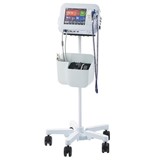Dr Parnis said effective and coordinated medical workforce planning was essential to ensure a highly skilled medical workforce in the right numbers and in the right places met the future health needs of the Australian community.
"We are currently experiencing ongoing medical workforce shortages in a number of specialties, as well as in regional and rural Australia," Dr Parnis said.
"It is projected that, by 2017, there will be more than 3800 graduates of Australian medical schools.
"These medical graduates must have access to sufficient postgraduate training positions in the right specialties and locations so that the future medical workforce is delivering the services that the community needs.
"Robust medical workforce planning is needed to maximise the benefits that these highly trained future doctors can bring to the health system."
AMA's former partnership with HWA
Dr Parnis said: "The AMA had worked closely with Health Workforce Australia (HWA), which had undertaken substantial long-term national workforce planning projections for the medical profession.
"Early this year, HWA, overseen by the National Medical Training Advisory Network (NMTAN), had started work on a National Training Plan that would include extensive speciality workforce projections and recommended training intakes.
"With HWA now gone, the AMA wants to see the National Training Plan progressed.
"The essential functions of HWA have been into the Department of Health, but the AMA understands that only seven former HWA staff accepted offers of employment with the Department.
"As a result, work on the National Training Plan appears to have lost all momentum."
Dr Parnis said the Health Workforce 2025 report predicted a significant bottleneck in entry to vocational training by 2016, along with a potential shortage of resident medical officer (RMO) training places.
Public sector shortages
Dr Parnis said: "The AMA is also starting to see emerging evidence of shortages in public sector positions for new Fellows in a number of specialties, such as anaesthetics, particularly in metropolitan areas.
"Rural workforce shortages also remain an acknowledged problem.
"Conscious of these shortages, and noting that the advertising of posts and applications for entry to vocational training in 2016 will occur in mid-2015, the need for a detailed National Training Plan is clearly taking on increased urgency.
"The reality is that already there is probably insufficient time for substantial work to be done to inform vocational training numbers for 2016.
"It is vital that the important work of NMTAN and the development of a detailed National Training Plan is reactivated quickly.
"Workforce planning is falling dangerously behind, and it is patients and communities who will miss out on the highly trained doctors they need in the future if we don't get the planning right now."


















